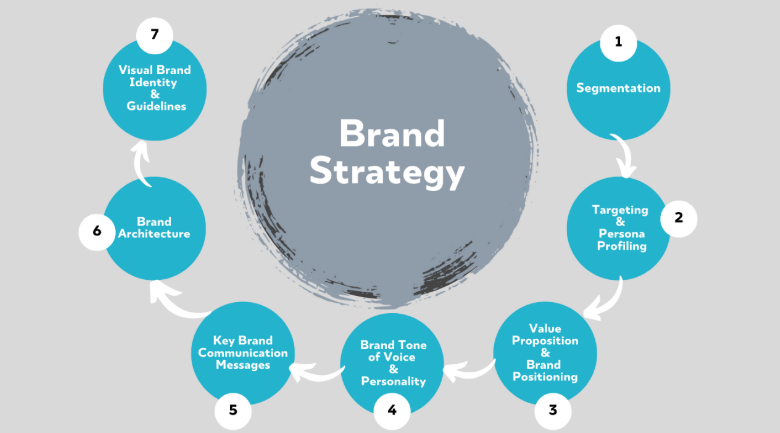Brand Revitalization: Breathing New Life Into Legacy Brands

In the ever-evolving marketplace, even the most established brands can lose their shine. The concept of brand revitalization represents not merely a cosmetic update but a strategic reimagining that can determine whether a company thrives or fades into obscurity.
Understanding Brand Decline
Before diving into revitalization strategies, it’s crucial to recognize the warning signs of brand fatigue. Declining market share, decreasing customer engagement, and growing irrelevance among younger demographics often signal that a brand needs renewed attention. According to McKinsey research, companies that successfully revitalize their brands typically experience 10-15% revenue growth within two years of implementation.
The natural lifecycle of brands typically follows a predictable pattern—introduction, growth, maturity, and eventual decline. However, this decline isn’t inevitable. With thoughtful intervention, brands can experience rebirth, entering a new growth phase rather than continuing their downward trajectory.
The Art and Science of Brand Revitalization
Brand revitalization balances honoring heritage while embracing contemporary relevance. This delicate balance requires understanding the core attributes that initially made your brand successful while acknowledging the shifting landscape around it.
The most effective revitalization efforts begin with thorough research to identify which brand elements remain valuable to consumers and which need refreshing. This might involve in-depth customer interviews, competitive analysis, and market trend evaluation.
Consider Burberry’s remarkable transformation. Once associated primarily with outdated check patterns and counterfeits, the luxury brand underwent a comprehensive revitalization under creative director Christopher Bailey and CEO Angela Ahrendts. They maintained Burberry’s British heritage but reimagined it through a modern lens, emphasizing digital innovation and appealing to younger affluent consumers.
Practical Revitalization Strategies
The path to brand renewal varies for each organization, but several approaches have proven particularly effective:
Redefining the core proposition means identifying what truly matters to today’s consumers while maintaining brand authenticity. Old Spice successfully pivoted from your grandfather’s cologne to a youth-oriented brand through clever marketing and product innovation, all while keeping their distinctive scent profile intact.
Expanding to new markets creates growth opportunities while refreshing brand perception. LEGO faced near-bankruptcy in the early 2000s before revitalizing its brand by expanding into movies, theme parks, and digital games while maintaining its core building block concept.
Leveraging nostalgia with modern relevance creates powerful emotional connections. Nintendo has masterfully balanced nostalgia for classic games like Mario and Zelda with innovations in gaming technology, creating experiences that appeal across generations.
Refreshing visual identity signals change while honoring heritage. Mailchimp’s redesign maintained their playful monkey mascot but evolved their typography, color palette, and illustration style to reflect their expanded business services.
Implementation Framework
Successful brand revitalization requires systematic implementation:
First, conduct a comprehensive brand audit to identify strengths, weaknesses, and opportunities. This means honestly assessing what’s working and what isn’t across all touchpoints.
Next, clarify your revitalization objectives with specific metrics. Are you aiming to attract younger demographics? Expand into new markets? Increase premium positioning? Clear goals will guide your strategy.
Then develop a cohesive revitalization plan that addresses product innovation, marketing communication, customer experience, and internal culture. Each element should reinforce your refreshed brand promise.
Implementation requires alignment across all departments. Your brand strategy must inform decisions from product development to customer service to ensure consistent delivery of your revitalized promise.
Finally, measure results against your established metrics and be prepared to make ongoing adjustments. Brand revitalization isn’t a one-time effort but an ongoing commitment to evolution.
The Human Element
Amidst discussions of strategy and metrics, never lose sight of the human connection that powers successful brands. Emotional resonance remains the most powerful driver of consumer loyalty, particularly when revitalizing legacy brands with established emotional equity.
Apple’s iconic “Think Different” campaign during their 1990s revitalization didn’t focus on product specifications but rather on the emotional connection between innovative thinkers and the Apple brand. This human-centered approach helped transform Apple from a struggling computer company into one of the world’s most valuable brands.
Conclusion
Brand revitalization represents both challenge and opportunity. By honoring heritage while embracing change, even the most mature brands can find renewed relevance and growth. The process requires courage, creativity, and commitment—but the alternative of slow decline makes revitalization worth the investment.
For legacy brands willing to reimagine themselves while maintaining their core identity, revitalization offers not just survival but the opportunity for renewed market leadership. In an age of disruption, perhaps the most disruptive strategy is to reinvent yourself before circumstances force your hand.








